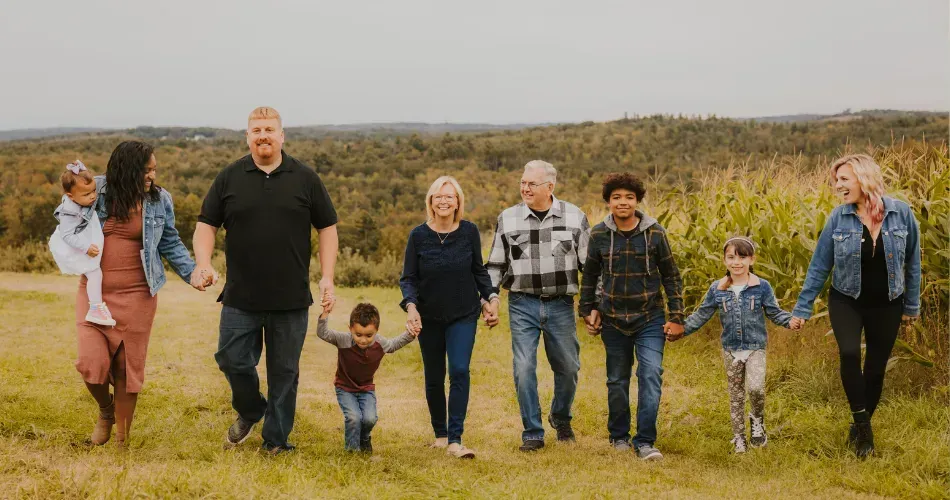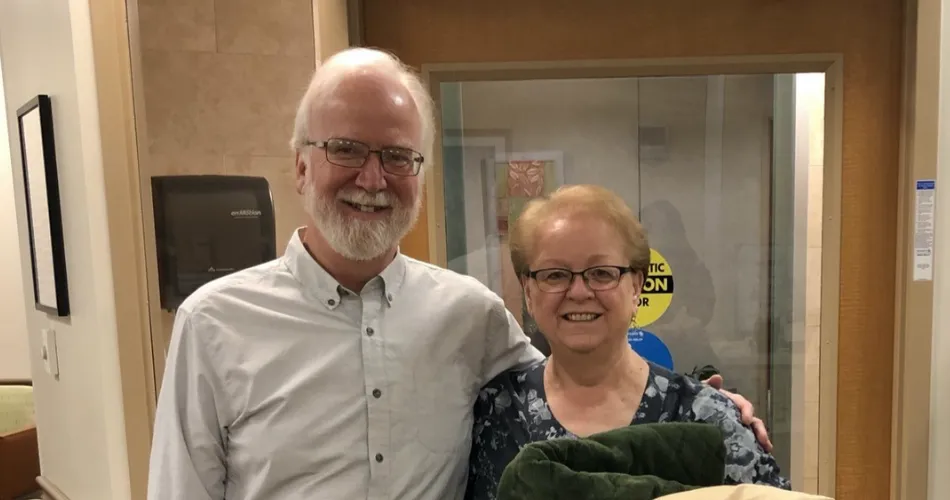Why I Participate In Myeloma Research: Sally Torgeson's Story

Shortly after her diagnosis, Sally Torgeson knew that Dr. Google wasn't going to be the solution to her myeloma education. She set out to find trusted, reliable organizations and resources that could teach her about her multiple myeloma.

She quickly found the Myeloma Crowd (known now known as HealthTree Foundation for Multiple Myeloma) and jumped into the different programs and services that they offered. HealthTree Cure Hub was the first program that she joined. That was six years ago.
Why Did Sally Join HealthTree Cure Hub?
When I asked Sally why she joined HealthTree Cure Hub, she mentioned she lived far away from her specialist/academic center. HealthTree Cure Hub became very instrumental in getting her local area of doctors in Santa Barbara (where she got her infusions and treatments) coordinated with her treatment directed by City of Hope.
Trying to keep track of her records in two places had been really difficult, especially since she was trying to track it all on paper. Through HealthTree Cure Hub, Sally read notes from her specialist and her oncologist, and she really understood the conversation and relationship between the two physicians. Being able to see all of her labs and records in one place was extremely helpful to her in understanding her disease and current myeloma status as well.
The Potential of HealthTree Cure Hub to Improve Myeloma Research
Sally really understands the power of real-world data when it comes to HealthTree Cure Hub.
She explains,
"The more people you can get into a clinical trial, the more data that you have, and the more accurate the clinical trial results. It's the same [with HealthTree Cure Hub]. The research [that myeloma investigators conduct] in HealthTree Cure Hub can be more thorough and accurate if we have more people joining HealthTree Cure Hub and providing their [information] to the concentrated database."
Sally went on to explain that databases such as Cure Hub allow researchers to answer myeloma questions involving race, gender, age, comorbidities, genetic outcomes, etc., through real-world data studies, as they have a wider breadth of people to help and analyze.
Right now, we have around 13,000 myeloma patients contributing their information to our database, but we don't want to stop there. The more people that connect their medical records, the more accurate the data, as Sally shared. Remember, all of your records and personal information are anonymized before being shared with researchers.
Why Does Sally Participate in HealthTree Cure Hub Surveys and Studies?
The more information researchers and physicians have, the better decisions they can make! This leads to better discoveries and improved patient outcomes.
"My particular genetic profile is common in 15% of myeloma patients," Sally explains, "if everyone answers surveys, it gives a chance for everyone to be analyzed for a myeloma cure. More information is better information."
Sally has participated in all of the surveys that HealthTree Cure Hub offers. When I asked her what her favorite one had been, she had to stop and think. Finally, she decided on the nutrition and diet survey.
"It wasn’t before because I don’t like people telling me what to eat," She laughs, "but I am realizing the importance of diet and how it can improve our lives."
Join HealthTree Cure Hub
Do your part in joining HealthTree Cure Hub like Sally to provide more real-world information to myeloma researchers. You, too, can participate in surveys and studies that shape the way myeloma investigators see and understand multiple myeloma.
You can sign up for free today: HealthTree Cure Hub Signup
If you have any questions or concerns about joining HealthTree Cure Hub, contact our Patient Navigator Team by emailing support@healthtree.org or calling/texting +1 800 709 1113.
Shortly after her diagnosis, Sally Torgeson knew that Dr. Google wasn't going to be the solution to her myeloma education. She set out to find trusted, reliable organizations and resources that could teach her about her multiple myeloma.

She quickly found the Myeloma Crowd (known now known as HealthTree Foundation for Multiple Myeloma) and jumped into the different programs and services that they offered. HealthTree Cure Hub was the first program that she joined. That was six years ago.
Why Did Sally Join HealthTree Cure Hub?
When I asked Sally why she joined HealthTree Cure Hub, she mentioned she lived far away from her specialist/academic center. HealthTree Cure Hub became very instrumental in getting her local area of doctors in Santa Barbara (where she got her infusions and treatments) coordinated with her treatment directed by City of Hope.
Trying to keep track of her records in two places had been really difficult, especially since she was trying to track it all on paper. Through HealthTree Cure Hub, Sally read notes from her specialist and her oncologist, and she really understood the conversation and relationship between the two physicians. Being able to see all of her labs and records in one place was extremely helpful to her in understanding her disease and current myeloma status as well.
The Potential of HealthTree Cure Hub to Improve Myeloma Research
Sally really understands the power of real-world data when it comes to HealthTree Cure Hub.
She explains,
"The more people you can get into a clinical trial, the more data that you have, and the more accurate the clinical trial results. It's the same [with HealthTree Cure Hub]. The research [that myeloma investigators conduct] in HealthTree Cure Hub can be more thorough and accurate if we have more people joining HealthTree Cure Hub and providing their [information] to the concentrated database."
Sally went on to explain that databases such as Cure Hub allow researchers to answer myeloma questions involving race, gender, age, comorbidities, genetic outcomes, etc., through real-world data studies, as they have a wider breadth of people to help and analyze.
Right now, we have around 13,000 myeloma patients contributing their information to our database, but we don't want to stop there. The more people that connect their medical records, the more accurate the data, as Sally shared. Remember, all of your records and personal information are anonymized before being shared with researchers.
Why Does Sally Participate in HealthTree Cure Hub Surveys and Studies?
The more information researchers and physicians have, the better decisions they can make! This leads to better discoveries and improved patient outcomes.
"My particular genetic profile is common in 15% of myeloma patients," Sally explains, "if everyone answers surveys, it gives a chance for everyone to be analyzed for a myeloma cure. More information is better information."
Sally has participated in all of the surveys that HealthTree Cure Hub offers. When I asked her what her favorite one had been, she had to stop and think. Finally, she decided on the nutrition and diet survey.
"It wasn’t before because I don’t like people telling me what to eat," She laughs, "but I am realizing the importance of diet and how it can improve our lives."
Join HealthTree Cure Hub
Do your part in joining HealthTree Cure Hub like Sally to provide more real-world information to myeloma researchers. You, too, can participate in surveys and studies that shape the way myeloma investigators see and understand multiple myeloma.
You can sign up for free today: HealthTree Cure Hub Signup
If you have any questions or concerns about joining HealthTree Cure Hub, contact our Patient Navigator Team by emailing support@healthtree.org or calling/texting +1 800 709 1113.

about the author
Audrey Burton-Bethke
Audrey is a content writer and editor for the HealthTree Foundation. She originally joined the HealthTree Foundation in 2020. Audrey loves spending time with her supportive husband, energetic four-year-old, and new baby.
More on Patient Stories
Trending Articles
Upcoming Events




Get the Latest Multiple Myeloma Updates, Delivered to You.
By subscribing to the HealthTree newsletter, you'll receive the latest research, treatment updates, and expert insights to help you navigate your health.
Together we care.
Together we cure.
3x Faster.













